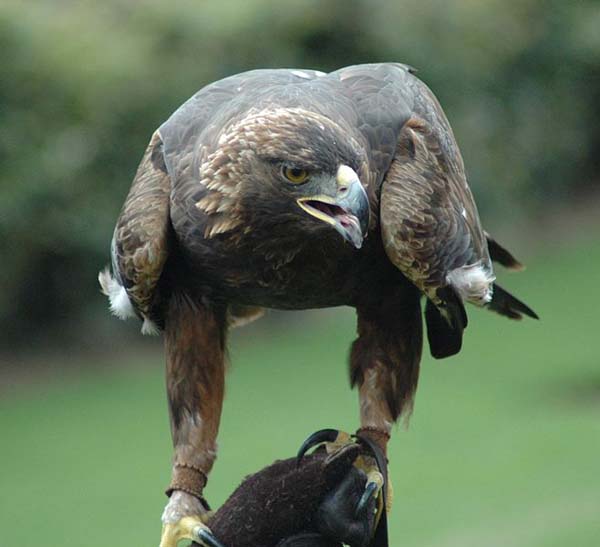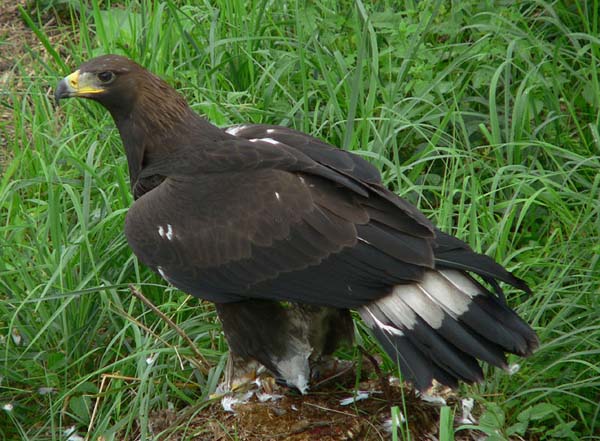Wildlife North America . com North American Animals - mamals, birds, reptiles, insects |
Golden Eagle (Aquila chrysaetos)
American golden eagle in the care of the Southeastern Raptor Rehabilitation Center Photograph by J. Glover - Atlanta, Georgia. Some rights reserved. (view image details) 
Golden Eagle Sub-adult Photograph by Zoo Ostrava. License: Public Domain. (view image details)
GOLDEN EAGLE FACTS
DescriptionGolden Eagles are large raptors with long, broad wings. They are mainly dark brown with golden feathers on the head, neck and face. The tail is gray brown. In flight the underside of the wings appear brownish gray, and the head and body look almost black. The feet are yellow, and the beak and claws are black. The legs have feathers down to the toes. Juveniles are similar to adults, with light patches on the tips of the wings, and a wide white band on the tail and black band at the tip of the tail. Juveniles develop adult plumage between age of 4 and 6 years. Size length 70cm - 84cm. Wingspan 185cm - 220 cm. Females are much larger than males. Weight: females - 3.9kg - 6.1kg; males 3kg - 4.4kg. Environment Golden eagles are found in open and semi-open habitats including tundra, shrubland, grasslands, woodland, coniferous forests, mountainous areas. Food small mammals such as rabbits, ground squirrels, prairie dogs, and marmots. Also eat birds, reptiles and some fish. Sometimes catch large birds and larger mammals such as coyotes and badgers. Breeding Golden Eagle build a large nest of sticks and vegetation and lined with softer vegetation. The female lays one to four (usually 2) eggs. The eggs are dull white and spotted or blotched with brown. Eggs hatch after about 35 to 45 days. Range found in the western half of North America from Alaska to central Mexico, with small numbers in eastern North America. Thy are also found in Europe, Asia, northern Africa. Classification
Home | Mammals | Reptiles | Birds | Insects | Privacy Policy | Disclaimer | Contact Us |